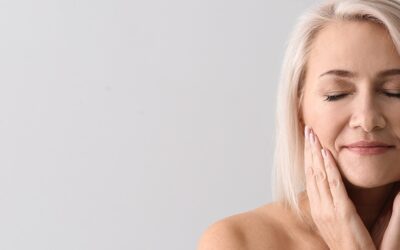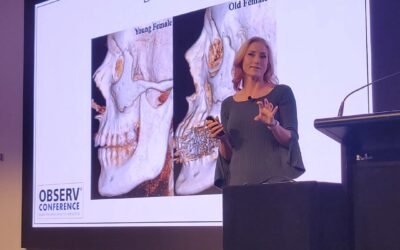We are generally all aware of changes in the skin due to hormonal fluctuations, but what can we do to counteract these responses? Understanding the skin’s response to hormonal changes helps us accept them and be proactive in using the ‘tools’ we have to lessen their effects.
Throughout our lives, hormones continuously affect our skin whether positively or negatively: key phases of change are puberty, menstrual cycle, pregnancy, menopause and disorders. It is important to realise that skin cells such as keratinocytes and fibroblasts have hormone receptors so are rapidly affected by any hormonal change.
All the phases are influenced by the ebb and flow of hormones, the androgens, estrogens, progesterone and testosterone.
Skin during puberty
Our first notable hormonal change tends to be puberty where we see an increase in androgens (sex hormones). The most commonly know androgen is testosterone. Androgens are necessary for the development and maintenance of sex organs. Both male and females have varying levels of the ‘masculine’ testosterone as is the case with the ‘female’ estrogens. The increase in androgens causes the skin follicle glands to grow larger and make more sebum; in turn, this creates an optimal environment for Propionibacterium or P Acnes bacteria. This is a bacterium that creates an abnormal cycle of inflammation, oil production and an inadequate sloughing of dead skin cells from acne pores resulting in teenage acne.
Skin during polycystic ovary syndrome
PCOS or polycystic ovary syndrome creates a similar environment for the skin – the ovaries that are responsible for some of the normal testosterone production in women become affected, increasing androgen production, resulting in enlarged sebaceous glands, increased oil and active acne.
During a women’s menstrual cycle testosterone will vary but will peak during the middle phase, around the time of ovulation, again potentially causing acne.
Skin during pregnancy
MSH or Melanocyte-stimulating Hormone is the name for a group of peptide hormones produced in the skin, pituitary gland and hypothalamus in response to UV radiation. The purpose of this process is to protect skin cell DNA from damage. The hormone stimulates specialised skin cells called melanocytes to produces melanin, the darker colour produced in the skin, for protection. During pregnancy or with the use of birth control, MSH is elevated and can cause hyperpigmention in the skin, known as Melasma.
Skin during menopause
The final big event in terms of hormonal changes is menopause. Estrogens are a big player in this event and here is how they affect the skin. Estrogens are anti-inflammatory; they increase hydration and structural integrity, increase collagen production. Decreased levels of female sex hormones result in thinning and increased wrinkling of the skin, reduced elasticity, firmness and strength. Because of these effects, capillaries are reduced and therefore blood flow, lessening nutrients to the skin. With this impaired function the skin also becomes more susceptible to UV damage. But don’t despair!
Surprisingly many of the recommendations for each of the associated hormonal conditions are very similar but may be prescribed at varying doses. For instance, vitamin A has many different effects on the skin cell, not only does it create a healthy skin cell and reverse damage to some extent, but also clears blockages at the surface. Vitamin A is used for age prevention, acne, rosacea, and skin rejuvenation; the earlier you start this as a topical nutrient (in skincare) the less likely you are to develop acne, pigmentation, and UV damage. The same applies to antioxidants: they help prevent damage to the skin cell from UV, pollutants and cell metabolism, so you are less likely to develop pigmentation, breakdown of elastin and collagen fibres, dehydration and generally impaired skin. Often this gradual damage to the skin creates adult acne, so is easily treated once the skin is in a healthy condition. Even with strong hormonal influences in puberty, the skin can be cleared effectively at the surface with the appropriate vitamin A, antioxidants and exfoliating agents.
In terms of treatment, natural peels are a fantastic way to reverse damage and clear the skin of acne. They apply the same principles as active home care (medical-grade skincare) but at much higher doses, creating more change in the skin.
Needling or Collagen Induction Therapy combined with PRP (Vampire Facial Plus) will induce collagen production, helping to deal with enlarged pores, fine lines, wrinkles, thinning skin, and acne scarring.
To start on any of these treatments, your first step is to come in for an Initial Skin Consultation with one of our skin experts.




